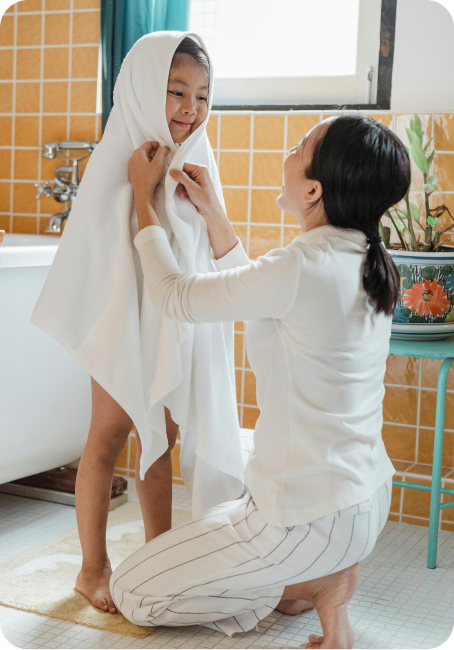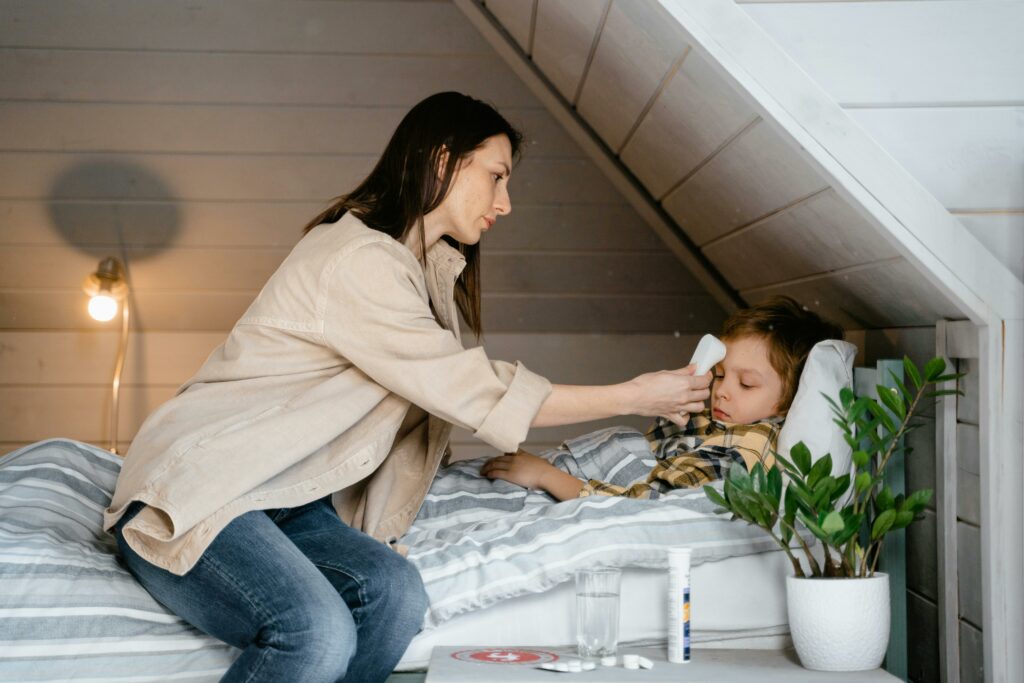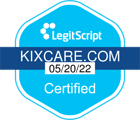Written by: Cristina Tullio RN, BNI
Eczema is a skin condition commonly seen in pediatrics often presenting with redness, dryness, and inflammation of the skin which can cause discomfort or itching. Key points to help manage your child’s eczema include identifying what triggers it and eliminating those triggers to reduce symptoms. This KixNurse written guide can be used as a tool to help navigate the challenges of eczema management for parents.
KixTip 1- Minimize irritation to the skin during bath time:

- Keep bath time (or shower time) to a maximum of 5-10 minutes to avoid dying the skin barrier. Baths can be taken once a day if thick cream/moisturizers are being used, or every second day if products used to moisturize the skin do not leave a thick residue on the skin.
- Water should be lukewarm and free from any irritating bath products such as bubble baths. Oatmeal baths are soothing to some children’s eczema and can be irritating to others.
- Cleanse the skin with a gentle, fragrance-free cleanser.
- When drying off after bath time, tap the skin with the towel, do not rub the skin as this can irritate eczema.
KixTip 2- Apply prescription creams:
- If your child has been given a prescription cream, apply it to the eczema-affected areas before applying moisturizer. Follow the directions given to you by your doctor or NP regarding the prescription.
- Prescription creams should be used when eczema is present and can be stopped when redness/dryness of the skin subsides. They can be restarted again when the eczema returns.
KixTip 3- Moisturize the skin thoroughly and persistently:
- Eczema-recommended moisturizers have the Eczema Society of Canada’s stamp of approval on them. Look for this stamp when picking a moisturizer but also be aware that eczema is individual and different products can help different children. Products can be tested to find the one that works best for your child. As a general rule, the product chosen should be fragrance and dye-free. Reach out to your KixNurse today for recommendations on specific products for your child!
- When trying a new moisturizer, perform a patch test on a small area of skin before applying it to the whole body to ensure there is no reaction to it.
- Apply a gentle, eczema-recommended moisturizer to the skin while it is still damp after bathing. If your child has a prescription cream, first apply this to the eczema-affected skin and then wait 15 minutes before applying moisturizer all over the body. Hands should always be washed before applying creams to prevent infection of the skin.
- Re-apply moisturizer during the day, 2-3 times or as needed. For younger children, massaging it into their skin can make the process calming and relaxing for them. Older children can be encouraged to learn to apply the cream independently.
- When going outside, a thick fragrance-free barrier cream can be applied to exposed skin to protect it instead of using moisturizer or most prescription creams. The best defense against the cold is by covering it with protective gear.
KixTip 4- Relieve the irritation and itch:
- A cool damp compress can be applied to itchy skin or moisturizers can be cooled in the fridge.
- Cooler temperatures in the house tend to be beneficial for reducing itchiness due to eczema.
- Anti-itch creams are available and can be applied over moisturizers and some prescription creams. Your KixNurse can help guide you on this.
- Older children should be taught to avoid scratching and instead, tapping the skin or lightly pinching it can be less harmful but still relieve the itch.
- Keep fingernails short to avoid infection caused by scratching. Gloves can be applied during the night to infants who are scratching.
- Avoid synthetic or rough clothing materials. Smooth, soft fabric such as cotton can be less irritating to the skin. Loose or light clothing may also be more comfortable.
- Clothing should be washed with fragrance-free detergent and fabric softener, dryer sheets and scent beads should be avoided.
- Dampness can be irritating to eczema, in the winter keeping a second pair of boots/socks to be changed into when boots and socks are wet can be helpful. The same applies to mittens, they can be swapped out when wet to minimize irritation of the hands.
KixTip 5- Learn to identify what is triggering your child’s eczema and work to avoid triggers:
- Dust and mold can be triggers of eczema for certain children. Avoiding carpets or cleaning them regularly can help if this triggers your child’s eczema, as can cleaning your home regularly. Toys should be washed, including stuffed animals to remove dust.
- If pollen is a trigger for your child, when pollen levels are high, avoid hanging clothing outside and encourage indoor play.
- Chlorine is a common trigger for eczema. If this irritates your child’s eczema, encourage rinsing the body with fresh water after coming out of a chlorinated pool.
- Tobacco use should be eliminated in the household as this can trigger eczema flares in some children.
- Extreme temperatures, hot or cold, may cause eczema to flare. If this is true for your child, when temperatures are extreme, time spent outdoors should be reduced when possible.
- Fragrance is a very common eczema trigger, therefore it is encouraged to keep cleansers, moisturizers, laundry detergents, and shampoos fragrance-free. Avoid wearing perfume if you will be holding your child.
*Key takeaway: With time, you will get to know what triggers your child’s eczema. Once you identify the triggers, then you can focus on eliminating or reducing them when possible.*
KixTip 6- Know when to consult:
- If your child is known to have eczema and their prescription cream is no longer effective, or if they are showing signs of eczema for the first time and it is not getting better with over-the-counter moisturizers, consult with your nurse practitioner or doctor for guidance. Our KixNurses are available 24/7 to help guide you on this.
- If your child develops any of the following symptoms, it is recommended to consult a healthcare provider as they may have developed an infection: fever, purulent discharge from their eczema, increased warmth/pain/redness, or swelling to the area.

For personalized guidance on your child’s eczema, product recommendation, or an individualized action plan, join our Kix360° Membership today for 24/7 access to our pediatric experts who can help you navigate these challenges from the comfort of your home!




![Verify Approval for [YOUR-WEBSITE-URL].com](https://static.legitscript.com/seals/11167439.png)
